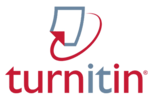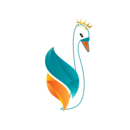Quantum Teaching Using TANDUR Syntax: A Complete Approach to Enhancing Cognitive, Affective, and Psychomotor Skills in Elementary Civic Education
Abstract
Purpose of the study:This study aims to analyze the effectiveness of TANDUR-based Quantum Teaching in improving student learning outcomes in the cognitive, affective, and psychomotor domains in Pancasila and Citizenship Education (PPKn) at the elementary school level.
Methodology:This research used a quantitative approach with a quasi-experimental nonequivalent control group design. The instruments used include a written test, learning motivation questionnaire, and performance observation sheet. The sample consisted of 42 fifth-grade students divided into experimental and control groups.
Main Findings:Students taught using the Quantum Teaching model scored higher in cognitive (78.12), affective (3.29), and psychomotor (80.10) domains than those in the control group. Statistical analysis showed significant differences (p < 0.05), with a dominant increase in learning motivation and social skills.
Novelty/Originality of this study:This study presents the comprehensive application of TANDUR-based Quantum Teaching in citizenship education to foster character development through cultural diversity. It contributes a holistic, engaging, and contextual learning model aligned with the principles of the Independent Curriculum.
References
M. R. Afan, A. Mahardhani, H. Cahyono, and Z. Chaniago, “The urgency of pancasila and citizenship education to strengthen national character with global citizenship dimensions,” AL-ISHLAH J. Pendidik., vol. 16, no. 4, 2024, doi: 10.35445/alishlah.v16i4.5759.
T. Fitriana, “The role of pancasila and citizenship education teachers in forming students’ character in primary schools,” Int. J. Stud. Educ., vol. 2, no. 2, pp. 123-128, 2024, doi: 10.62966/ijose.vi.748.
S. Supriadi, S. T. Dhayinta, R. Rafid, and I. Anshori, “Independent curriculum: Pancasila student profile through ppkn learning,” Educ. Sci. J. Educ., vol. 2, no. 1, 2024, doi: 10.59165/educatum.v2i1.55.
[4] M. Rusli and Maya, “The essence of citizenship education in elementary schools,” EDUJ Engl. Educ. J., vol 1, no. 1, 2023, doi: 10.59966/eduj.v1i1.515.
K. Rahayu, D. Yunitasari, E. Utaminingsih, I. Purwaningsih, and F. I. Sari, “The crucial of civic education for elementary school students,” Pedagog. J. Pendidik., vol 13, no. 2, 2024, doi: 10.21070/pedagogia.v13i2.1658.
R. Nugraha, R. Fahrezzi, and M. H. Praja, “Embedding character education through citizenship education in elementary schools,” JETISH J. Educ. Technol. Inf. Soc. Sci. Health, vol. 2, no. 2, 2023, doi: 10.57235/jetish.v2i2.919.
E. S. White, “Preservice elementary teachers and future civic teaching,” J. Soc. Stud. Res., vol. 48, pp. 261–273, 2024, doi: 10.1177/23522798241252939.
R. Əliyev, “21st century skills in education: Our yesterday, today,” Sci. Works, vol. 91, ni. 3, 2024, doi: 10.69682/azrt.2024.91(3).31-36.
H. Serin and A. Khabibullin, “Flipped classrooms in teaching method courses at universities,” Int. J. Acad. Res. Bus. Soc. Sci., vol. 9, no. 1, 2019, doi: 10.6007/IJARBSS/V9-I1/5459.
M. Timenko, “21 st century skills in school education in the United Kkingdom,” Тhe Sources Of Pedagogical Skills, vol. 26, pp. 202–206, 2021, doi: 10.33989/2075-146X.2020.26.227654.
F. Fauzan, A. Hairit, and R. A. M. Ansori, “Optimizing student achievement with a quantum teaching approach,” Molang J. Islam. Educ., 2024, doi: 10.32806/s0z5x559.
A. M. T. Allo, I. Farida, and I. L. Sinon, “The influence of quantum teaching model through the TANDUR strategy on the students’ learning outcome of senior high school students in static fluid materials,” J. Phys. Conf. Ser., vol. 2392, 2022, doi: 10.1088/1742-6596/2392/1/012004.
N. Setiasih, U. Umbara, and M. Habibi, “Penerapan model pembelajaran quantum teaching prinsip TANDUR Terhadap peningkatan kemampuan komunikasi matematis [Application of the quantum teaching learning model using the TANDUR principle to improve mathematical communication skills],” JUMLAHKU: Jurnal Matematika Ilmiah Universitas Muhammadiyah Kuningan, vol. 2, no. 2, pp. 50–58, 2016.
D. Insyiroh, Y. Tri, A. Utami, and A. M. Susetyo, “Peran Pembelajaran Quantum Learning dalam Meningkatkan Literasi Siswa di Kelas,” Katalis Pendidik. J. Ilmu Pendidik. Dan Mat., 2025, doi: 10.62383/katalis.v2i1.1236.
L. Nita, L. Mazzoli Smith, N. Chancellor, and H, Cramman, “The challenge and opportunities of quantum literacy for future education and transdisciplinary problem-solving,” Research in Science & Technological Education, vol. 41, no. 2, pp. 564-580, 2023, doi: 10.1080/02635143.2021.1920905.
L. Damayanti, E. Syaodih, and A. B. Silitonga, “Pengembangan model pembelajaran quantum teaching tipe TANDUR untuk meningkatkan minat belajar siswa [Development of the TANDUR type quantum teaching learning model to increase students' interest in learning],” Jurnal Pendidikan dan Pembelajaran Ekonomi Akuntans, vol. 2, no. 1, 2016.
M. A. Anjeli, M. Kustati, N. Sepriyanti, K. Furmston, and C. Parenti, “Analysis of quantum teaching model on student’s learning outcomes,” Riayatu Al-Quran, vol. 6, no. 2, 2024, doi: 10.62990/riqu.v6i2.50.
Y. Hamzah, M. Nawir, and H. Quraish, “The effect of slidesgo-assisted quantum teaching model on student activity, motivation and learning outcomes,” J. Pendidik. Dan Pengajaran Guru Sekol. Dasar JPPGuseda, vol. 6, no. 2, 2023, doi: 10.55215/jppguseda.v6i2.7736.
A. I. O. Pradini, M. Abdurrahman, and M. Nurmala, “The effect of quantum teaching method on motivation and Arabic language learning outcomes (Literature Study),” Edunesia J. Ilm. Pendidik., vol. 4, no. 3, 2023, doi: 10.51276/edu.v4i3.519.
F. Faradiba, D. Cilia, S. S. Lumbantobing, and N. Daniaty, “Application of quantum learning models to increase student motivation and learning outcomes,” International Journal of Progressive Sciences and Technologies (IJPSAT), vol. 24, no. 2, pp. 272–276, 2021, doi: 10.52155/IJPSAT.V24.2.2650.
S. A. Khozaei, N. Zare, H. K. Moneghi, T. Sadeghi, and M. M. Taraghdar, “Effects of quantum-learning and conventional teaching methods on learning achievement, motivation to learn, and retention among nursing students during critical care nursing education,” Smart Learn. Environ., vol. 9, pp. 1–11, 2022, doi: 10.1186/s40561-022-00198-7.
S. Sugiyono, Metode Penelitian Kuantitatif, Kualitatif dan R&D [Quantitative, Qualitative and R&D Research Methods]. Alfabeta, 2019.
J. W. Creswell, “Research design: Qualitative, quantitative, and mixed methods approaches-4th ed,” SAGE Publ., vol. 86(385), 2013.
C. Andrade, “The inconvenient truth about convenience and purposive samples,” Indian J. Psychol. Med., vol. 43, pp. 86–88, 2020, doi: 10.1177/0253717620977000.
I. Etikan, S. A. Musa, and R. Alkassim, “Comparison of convenience sampling and purposive sampling,” Am. J. Theor. Appl. Stat., vol. 5, p. 1, 2016, doi: 10.11648/J.AJTAS.20160501.11.
R. W. Emerson, “Convenience sampling revisited: Embracing its limitations through thoughtful study design,” J. Vis. Impair. Blind., vol. 115, pp. 76–77, 2021, doi: 10.1177/0145482X20987707.
Y. Lestari, “Application of quantum teaching method to science learning outcomes for class VI in elementary schools,” J. Vokasi Teknol. Dan Pendidik., vol. 3, no. 2, pp. 115–123, 2022, doi: 10.56667/jveit.v3i2.556.
J. M. Keller, “Development and use of the ARCS model of motivational design,” J. Instr. Dev., vol. 10, no. 3, pp. 2–10, 1987, doi: 10.1007/BF02905780.
H. Bekata, “Pengembangan perangkat pembelajaran pendidikan agama kristen dengan model quantum teaching tipe TANDUR berbantuan multimedia presentasi [Development of Christian religious education learning tools using the TANDUR type quantum teaching model assisted by multimedia presentations],” EDUKASIA J. Pendidik. Dan Pembelajaran, vol. 4, no. 1, 2023, doi: 10.62775/edukasia.v4i2.573.
F. Fauzan, A. Hairit, and R. A. M. Ansori, “Optimizing student achievement with a quantum teaching approach,” Molang J. Islam. Educ., vol. 2, no. 1, 2024, doi: 10.32806/s0z5x559.
S. A. Khozaei, N. V. Zare, H. K. Moneghi, T. Sadeghi, and M. M. Taraghdar, “Effects of quantum-learning and conventional teaching methods on learning achievement, motivation to learn, and retention among nursing students during critical care nursing education,” Smart Learning Environments, vol. 9, no. 1, pp. 18, 2022, doi: 10.1186/s40561-022-00198-7.
T. Setiawan, “Application the quantum learning method using simulation media with the TANDUR Strategy to improve student learning outcomes,” Co-Catal. J. Sci. Educ. Res. Theor., vol. 1, no. 1, 2023, doi: 10.33830/cocatalyst.v1i1.5132.
H. Subrata, U. Zuhdi, H. Dewi, and W. Vidiandari, “Implementation of the ‘TANDUR’ Model with script card media in learning local content in regional languages (Javanese) in elementary schools,” Int. J. Soc. Sci. Educ. Res. Stud., vol. 2, no. 12, pp. 2770-2790, 2022, doi: 10.55677/ijssers/v02i12y2022-14.
I. P. H. A. Franata, I. W. Simpen, and N. M. Dhanawaty, “Improvement of English speaking ability in 7th grade students of ganesha junior high school Denpasar Through TANDUR Method,” E-J. Linguist., vol. 14, no, 2, 2020, doi: 10.24843/e-jl.2020.v14.i02.p08.
W. Manik, A. G. Ivanatha, H. Syuhada, Y. Maldini, M. F. Islam, and Z. F. Rambe, “Quantum teaching dan quantum learning dalam pembelajaran [Quantum teaching and quantum learning in learning],” Karakter. J. Ris. Ilmu Pendidik. Islam, vol. 2, no. 2, 2025, doi: 10.61132/karakter.v2i2.697.
K. T. Tunnufus, W. K. S. Ahmad, and R. Rohana, “The effect of quantum teaching model in science learning on student’s learning motivation of 4th grade student,” Int. J. Elem. Sch. Teach., vol. 3, no. 1, 2023, doi: 10.26858/ijest.v3i1.39199.
M. I. Ramadhani and Y. Ayriza, “The effectiveness of quantum teaching learning model on improving the critical thinking skills and the social science concept understanding of the elementary school students,” J. Prima Edukasia, vol. 7, no. 1, 2019, doi: 10.21831/JPE.V7I1.11291.
M. S. Khalid, Z. Qi, and J. Bibi, “The impact of learning in a diversified environment: social and cognitive development of international students for global mind-set,” Eur. J. Train. Dev., vol. 46, no. no. 5/6, pp. 373-389, 2021, doi: 10.1108/EJTD-12-2020-0175.
A. Anshu, and S. Arunachalam, “A survey on the complexity of learning quantum states,” Nature Reviews Physics, vol. 6, no. 1, pp. 59-69, 2024, doi: 10.1038/s42254-023-00662-4.
M. A. Anjeli, M. Kustati, N. Sepriyanti, K. Furmston, and C. Parenti, “Analysis of quantum teaching model on student’s learning outcomes,” Riayatu Al-Quran, vol. 6, no. 2, 2024, doi: 10.62990/riqu.v6i2.50.
S. Nahar, S. Suhendri, Z. Zailani, and H. Hardivizon, “Improving students’ collaboration thinking skill under the implementation of the quantum teaching model,” Int. J. Instr., vol. 15, no. 3, 2022, doi: 10.29333/iji.2022.15325a.
T. Wiyoko, A. Aprizan, R. Riska, and T. Wulandari, “Improve science process skills and learning outcomes with the quantum learning model,” IJIS Edu Indones. J. Integr. Sci. Educ., vol. 3, no. 1, 2021, doi: 10.29300/IJISEDU.V3I1.3721.
L. S. Vygotsky, Mind in Society: The Development of Higher Psychological Processes. Harvard University Press, 1978.
A. Asmadi, M. Masobirin, H. Asshidqi, S. Amanda, and Y. Maila, “Metodologi pengajaran PAI dengan metode pembelajaran quantum teaching di madrasah tsanawiyah negeri 3 Batang Hari [Islamic Religious Education teaching methodology using the quantum teaching learning method at Batang Hari State Islamic Junior High School 3],” Pedagog. J. Ilmu-Ilmu Kependidikan, vol. 4, no. 2, 2024, doi: 10.57251/ped.v4i2.1546.
J. H. Siahaan, F. Marson, and O. Forsyth, “Transforming primary school science education: The quantum teaching revolution,” J. Ilmu Pendidik. Dan Hum., vol. 11, no. 1, 2022, doi: 10.35335/jiph.v11i1.14.
I. Azmi, S. Prayogi, and M. Asy’ari, “Implementing the quantum learning model to enhance students’ physics learning outcomes,” Lensa J. Kependidikan Fis., vol. 11, no. 1, 2023, doi: 10.33394/j-lkf.v11i1.8558.
A. Saavedra and V. Opfer, “Learning 21st-century skills requires 21st-century teaching,” Phi Delta Kappan Mag., vol. 94, pp. 13–8, 2012, doi: 10.1177/003172171209400203.
N. Amirova, “Traditional vs. Non-Traditional teaching in secondary education: A comparative analysis,” Porta Universorum, 2025, doi: 10.69760/portuni.010309.
A. Saavedra and V. Opfer, “Learning 21st-Century skills requires 21st-Century teaching,” Phi Delta Kappan Mag, vol. 94, pp. 13–8, 2012, doi: 10.1177/003172171209400203.
M. Lastasa, and B. B. Habaridota, “The implementation tandur quantum teaching learning model to improve social learning achievement,” International Journal of Elementary Education, vol. 4, no. 2, pp. 153-159, 2020, doi: 10.23887/ijee.v4i2.26593.
Copyright (c) 2025 Limsi Limsi, Iis Siti Aisyah, Lud Waluyo

This work is licensed under a Creative Commons Attribution 4.0 International License.
Authors who publish with this journal agree to the following terms:
- Authors retain copyright and acknowledge that the Integrated Science Education Journal is the first publisher licensed under a Creative Commons Attribution 4.0 International License.
- Authors are able to enter into separate, additional contractual arrangements for the non-exclusive distribution of the journal's published version of the work (e.g., post it to an institutional repository or publish it in a book), with an acknowledgment of its initial publication in this journal.
- Authors are permitted and encouraged to post their work online (e.g., in institutional repositories or on their website) prior to and during the submission process, as it can lead to productive exchanges and earlier and greater citation of published work.








.png)
.png)





